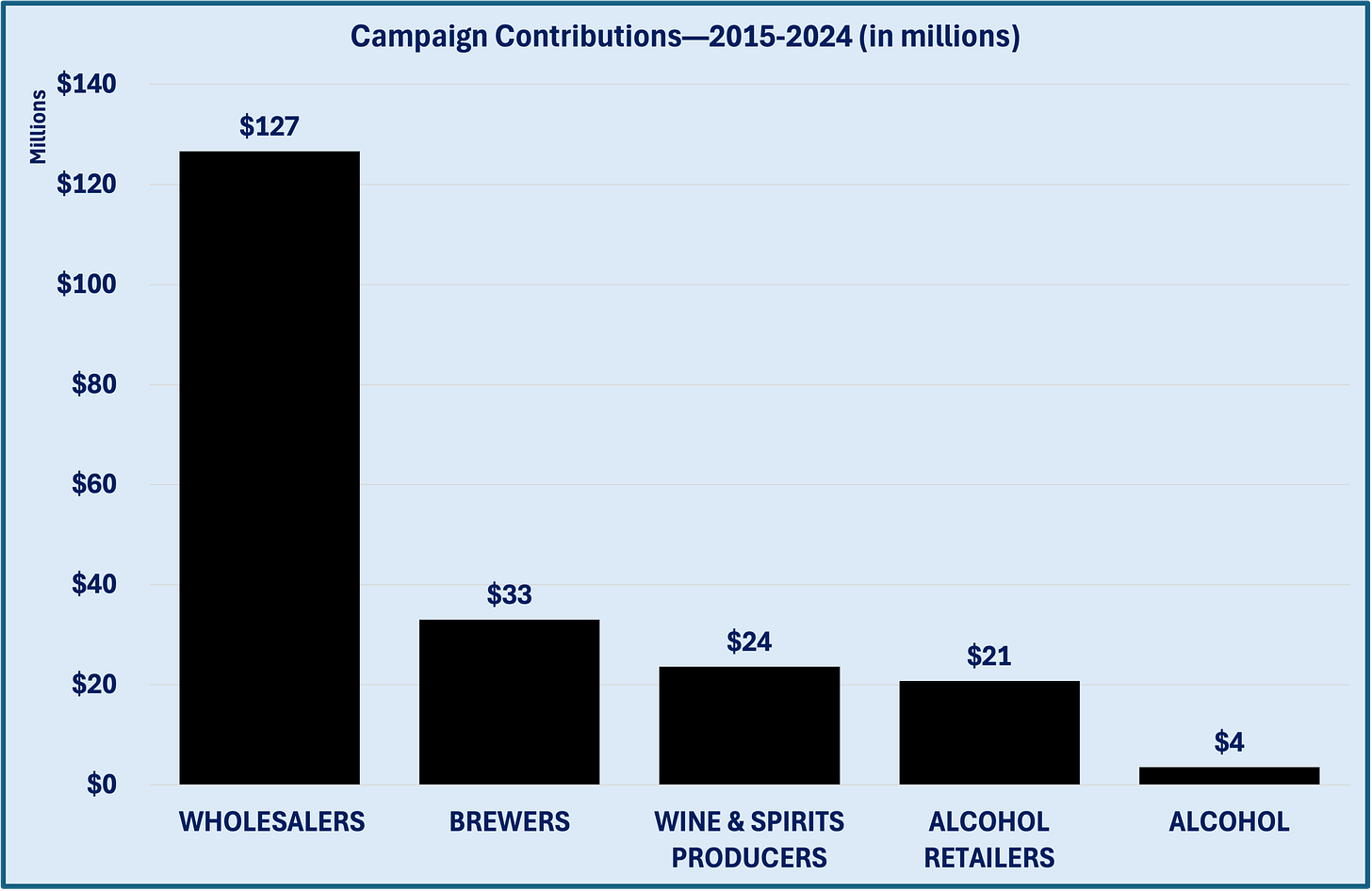The Wholesalers' $100 Million Investment in the Three-Tier System
An examination of wholesaler campaign contributions over the past 5 years
When it comes to political campaign contributions, there is a general rule: those who give the most, have the most to lose.
Today I want to give a campaign contributions update on those who unquestionably have the most to lose in the alcohol beverage industry: Wholesalers.
I want to look at wholesaler campaign contributions over the past five election cycles that were given only to state campaigns, not federal. I want to take just the last five election cycles (two-year periods that end in even years when the most important elections tend to take place) because this period gives us a good glimpse of trends. I want to look at only state-based campaign contributions because 99% of rules, laws, and regulations governing alcohol are created in state capitols, not in Washington, D.C. Take note, these figures do not include what will certainly be millions more given to candidates in 2024 that have yet to be given. Currently, $4.6 million has been given by wholesalers in 2024. That number could easily triple by November.
In this quick investigation based on filings by candidates and donors and collected by the National Institute on Money in Politics and the Center for Responsive Politics, I look at wholesaler contributions by state, by largest contributors and largest recipients, by party affiliation, by incumbency status, and by office type.
(click on the charts below to see the full data sets from Followthemoney.org)
In the past five election cycles, wholesalers and those who work for wholesalers have given $100 million in campaign contributions. This is nearly four times more than the next largest category of contributors, Brewers. It is about five times more than that contributed by alcohol retailers and almost 8 times more than was given by Wine & Spirit producers. This disparity is depicted in the chart below where the “alcohol” category represents a hodgepodge of contributors linked to alcohol. In all, alcohol wholesalers contributed far more to state political campaigns than all the rest of the categories combined.
Wholesalers have a great deal more to lose than all the other players in the alcohol category: their unearned privilege to control the distribution of alcohol in the United States via the three-tier system that still operates to one degree or another in most states.
Take away the states’ mandates that require brewers, wineries, and distilleries to sell to wholesalers in order to find their products sold on retail shelves in the different states and the power dynamic (and the revenue generated by alcohol sales) changes dramatically. Imagine an alcohol distribution system in which producers could choose to sell to wholesalers or directly to retailers or directly to the public regardless of their size and the wholesalers’ negotiating power would plummet, along with their margins.
This is the primary reason wholesalers contribute such large sums to political candidates: It serves to retain the three-tier system and with it their outlandish margins and significant lack of service provided to the producers forced to use them to sell via retailers and restaurants.
Looking below at wholesaler campaign contributions on a state-by-state basis, it is Texas wholesalers that, by far, lead the way. This is due almost entirely to the largess that is showered by beer wholesalers upon state politicians. But it is also a matter of Texas placing no limits on campaign contributions.





